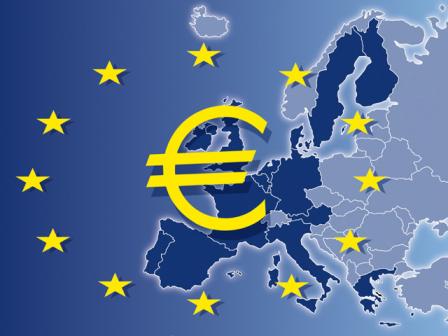Due Diligence: Ask This, Not That
by Corey Hoffstein, NewFound Research
Summary
- Due diligence is an important practice in our industry – and one that should be ever-evolving.
- There are some questions we receive on due diligence questionnaires that are well intentioned, but we think can be improved.
- Finally, in doing due diligence, we think that after the question “how”, there should almost always be a follow-up question of “why”?
We answer a lot of due diligence questionnaires. A lot of due diligence questionnaires.
We thought we’d address two of the questions we get fairly frequently, why we think they fail to achieve their purpose, and questions we’d rather see.
Finally, we thought we’d share why we believe “why?” is the single most important question you can ask in due diligence.
“What’s the benchmark?”
Benchmarks used to be everything. In the world of style-box driven portfolios, benchmarks told you pretty much everything you needed to know about return and risk expectations.
That’s because the world was dominated by portfolios seeking relative (out)performance. Since the objective was relatively measured, the obvious question was “relative to what?”
Benchmarks aren’t all bad, either. They can help distinguish between when a manager underperforms and when a style underperforms. Consider that value has underperformed growth for 7 years: without using a value-based benchmark, we may unfairly critique value managers simply because their style is out of favor.
More and more portfolios, however, are now being managed to objectives, absolute of any specific benchmark. For example, consider a portfolio with the objective to achieve a yield that is 3% above that of short-term U.S. Treasuries.
In this case, asking “what’s the benchmark?” might not make sense. While the outcome is being measured against short-term U.S. Treasuries, the portfolio return and risk may look nothing like it.
So what would we recommend asking instead?
- Does the strategy have a relative performance, absolute performance, or outcome-based objective? What is it?
- Where does this strategy fit
 within a portfolio?
within a portfolio? - How do I evaluate the long-term performance of the strategy?
- How do I evaluate the short-term performance of the strategy?
- In what environments will this strategy perform the best?
- In what environments will this strategy perform the worst?

“How much does the portfolio team have invested?”
The motive behind this question has always been to figure out whether the investment team has skin in the game or whether they are just playing with other people’s money.
The fear is that if the portfolio managers don’t have enough of their own money invested, they don’t believe in the strategy, won’t be as careful, won’t pay as close attention, or may be more likely to take on excess risk.
We think this view is misguided.
Firstly, portfolio managers are already heavily invested regardless of whether they have a single dollar invested. How? Career risk. While many investors believe that a manager without dollars invested is incentivized to swing for the fences, the same “career-launching” behavior can quickly turn into “career-ending” behavior. “Blowing up” doesn’t look good on any portfolio managers’ resume. So before they even invest a dollar, a manager has already invested her career.
Secondly, a manager that has too much skin in the game may be incentivized to carry too little risk in the portfolio. Again, the manager already has her career on the line: now she’s got her personal wealth tied to the same risk.
If the manager understands risk, she’ll understand that this is pretty much the same as working for a company and having your 401k invested entirely in that company’s stock. If the company goes bankrupt, she’ll not only lose her job, but her retirement savings as well.
If the portfolio manager “blows up,” she’ll not only lose her job, but she’ll have destroyed much of her own personal wealth as well.
So a portfolio manager that does have an incredible amount of her own wealth tied up in the portfolio either (1) has an incredibly high risk tolerance, (2) will skew the risk tolerance of the portfolio lower, or (3) doesn’t understand risk at all.
Finally, there are few investment strategies that should represent the majority of anybody’s wealth. Consider the extreme example of a long/short equity fund. Would we expect the portfolio manager to invest a significant amount of their wealth in a strategy that would usually represent, at most, 5% of an investor’s portfolio? Even a U.S. large-cap value fund may only represent 10-20% of most client’s portfolios. So why would we expect the managers to invest their own money any differently?
The question of “how much does the portfolio team have invested?” isn’t necessarily a bad question, but on its own it fails to accurately paint a picture. We think that if the question is going to be asked, the following questions should be asked as well:
- How is the portfolio team compensated? Do they earn compensation relative to portfolio performance?
- How does the portfolio team use this strategy within their own portfolios?
- Does the portfolio team own equity in the company?
- What percentage of assets does this strategy represent of the overall firm’s assets?
The single biggest change we’d make: ask “why?” and ask that next question
There is a technique called the “5 Whys” which is used to iteratively discover the root cause of something. By iteratively asking “why?” to every answer, we can continually peel back the onion and discover the root reason.
Broadly, what we believe is missing from due diligence questionnaires is the question “why?” There is a lot of fact finding, but not a lot of root cause exploration.
While we think asking “why?” five times to every question in a due diligence questionnaire would be overkill, we do think asking “why?” at least once would be a dramatic improvement in providing transparency into how the assets are truly managed and how the firm truly operates.
Consider that while asking “how is the portfolio managed?” is important, it is far less illuminating than “why is it managed that way?” The answer to the former provides the process, but it does not provide the philosophy behind the process. It does not tell us the underlying assumptions made by the investment team in developing the process.
We’ve received many great and unique questions in different due diligence questionnaires – but we think all due diligence processes could be improved by simply asking “why?” more often.
We believe that a due diligence questionnaire should be the beginning of a due diligence process – not the beginning and the end. The questionnaire should then lead to a live conversation where the “why” questions are asked and that onion is peeled back.
Copyright © NewFound Research














